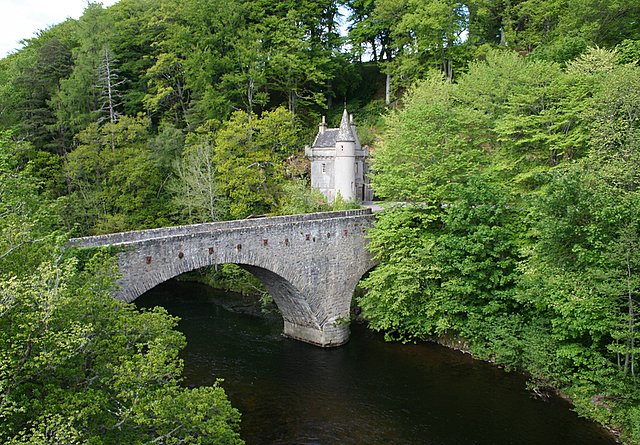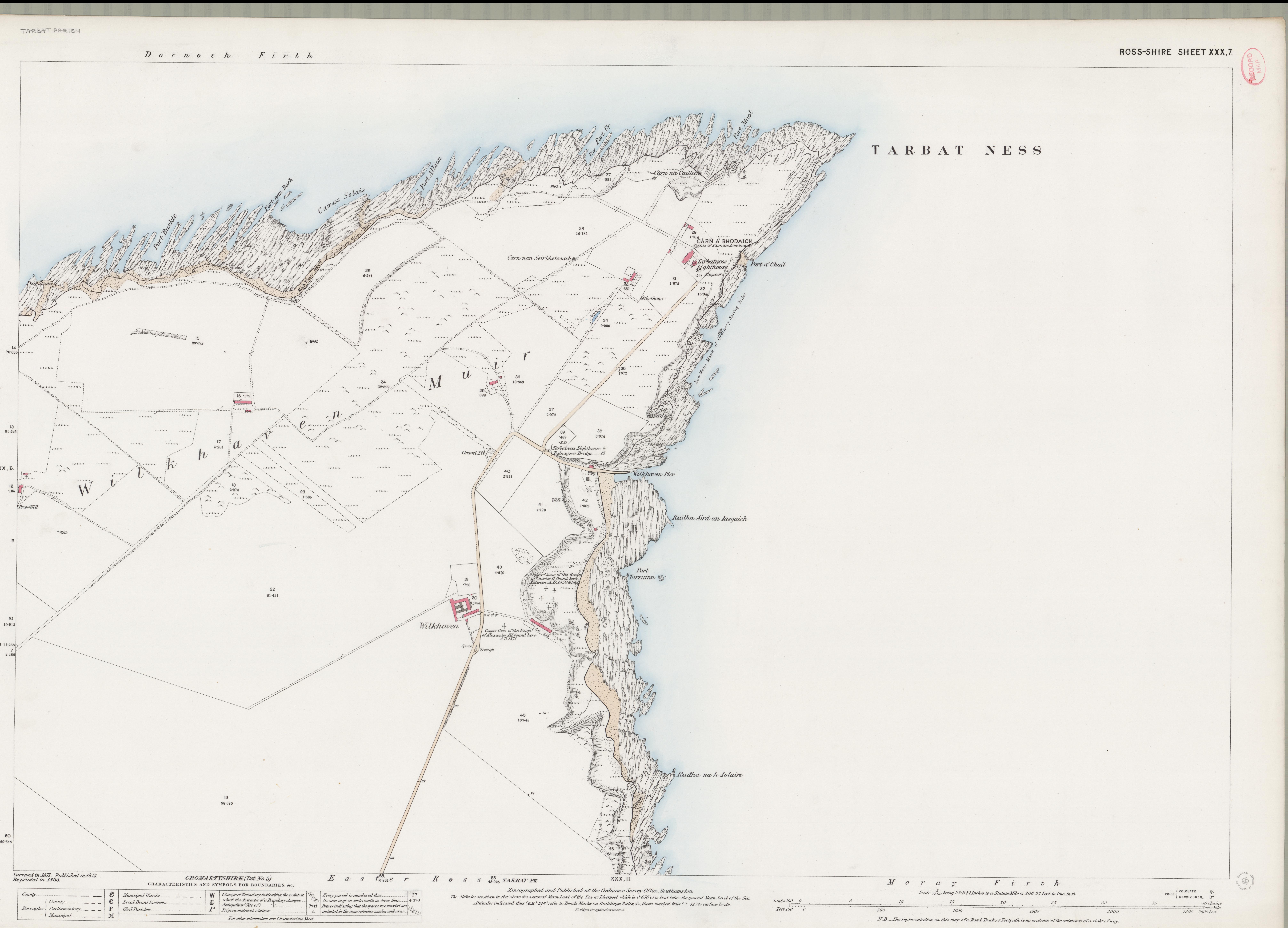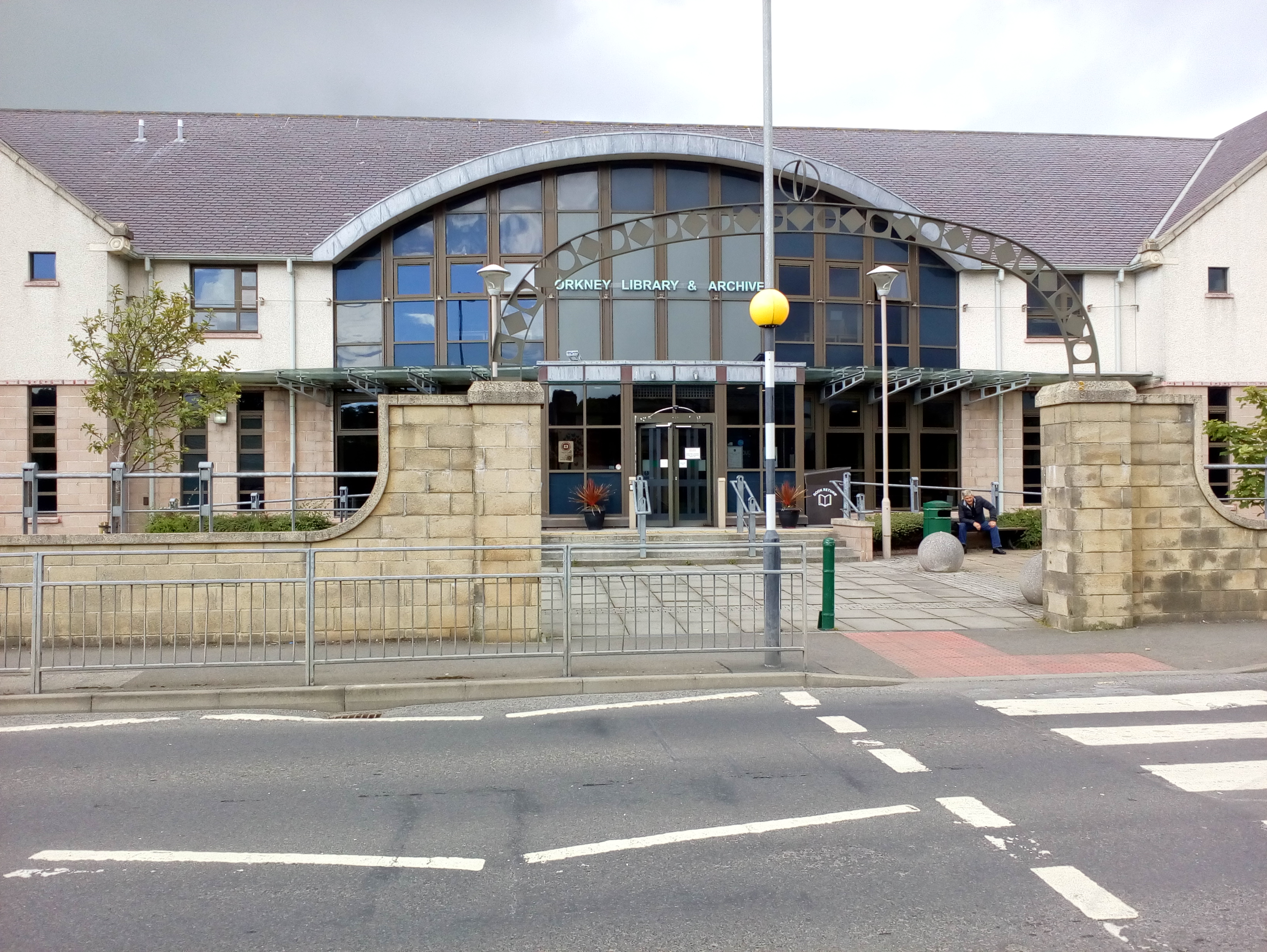|
George Burn
George Burn (1759 – c.1820) was an architect, civil engineer and contractor active in Scotland in the late 18th and early 19th centuries. Burn was born in Yester in East Lothian in 1759. His career in bridge design started in 1797, when he worked with his elder brother James Burn on a bridge at Inverbervie. In 1798 he designed and built a two-span bridge at Bilsdean in East Lothian, and between 1800 and 1804 he built a number of bridges over rivers in Moray, including the Bridge of Avon at Ballindalloch, which is now a Category A listed building, as well as a number of ecclesiastical buildings, including two churches in Dingwall and Huntly, and a chapel in the Gordon Estate. He encountered financial difficulties connected with his work on the Spey Bridge at Fochabers, which led to his estate being sequestered in 1803. By 1806 he was living in Wick, Caithness, working mainly as a masonry contractor on a number of bridges designed by Thomas Telford. A spell of ill-health force ... [...More Info...] [...Related Items...] OR: [Wikipedia] [Google] [Baidu] |
Bridge Of Avon In Summer Sunshine
A bridge is a structure built to span a physical obstacle (such as a body of water, valley, road, or rail) without blocking the way underneath. It is constructed for the purpose of providing passage over the obstacle, which is usually something that is otherwise difficult or impossible to cross. There are many different designs of bridges, each serving a particular purpose and applicable to different situations. Designs of bridges vary depending on factors such as the function of the bridge, the nature of the terrain where the bridge is constructed and anchored, and the material used to make it, and the funds available to build it. The earliest bridges were likely made with fallen trees and stepping stones. The Neolithic people built boardwalk bridges across marshland. The Arkadiko Bridge (dating from the 13th century BC, in the Peloponnese) is one of the oldest arch bridges still in existence and use. Etymology The ''Oxford English Dictionary'' traces the origin of the wo ... [...More Info...] [...Related Items...] OR: [Wikipedia] [Google] [Baidu] |
Fochabers
Fochabers (; gd, Fachabair or Fothabair) is a village in the Parish of Bellie, in Moray, Scotland, east of the cathedral city of Elgin and located on the east bank of the River Spey. 1,728 people live in the village, which enjoys a rich musical and cultural history. The village is also home to Baxters, the family-run manufacturer of foodstuffs. The present village owes its existence to Alexander Gordon, 4th Duke of Gordon (1743–1827). During the late-eighteenth century, during the Scottish Enlightenment, it was fashionable for landowners to found new towns and villages; these can be recognised all over Scotland, because unlike their predecessors they all have straight, wide streets in mainly rectangular layouts, a central square, and the houses built with their main elevations parallel to the street. The tenants benefited from more spacious homes, and the Duke, it has to be said, benefited from not having the ''hoi polloi'' living in hovels right on the doorstep of Gordo ... [...More Info...] [...Related Items...] OR: [Wikipedia] [Google] [Baidu] |
1759 Births
In Great Britain, this year was known as the ''Annus Mirabilis'', because of British victories in the Seven Years' War. Events January–March * January 6 – George Washington marries Martha Dandridge Custis. * January 11 – In Philadelphia, the first American life insurance company is incorporated. * January 13 – Távora affair: The Távora family is executed, following accusations of the attempted regicide of Joseph I of Portugal. * January 15 – **Voltaire's satire ''Candide'' is published simultaneously in five countries. ** The British Museum opens at Montagu House in London (after six years of development). * January 27 – Battle of Río Bueno: Spanish forces, led by Juan Antonio Garretón, defeat indigenous Huilliches of southern Chile. * February 12 – Ali II ibn Hussein becomes the new Ruler of Tunisia upon the death of his brother, Muhammad I ar-Rashid. Ali reigns for 23 years until his death in 1782. * February 16 – ... [...More Info...] [...Related Items...] OR: [Wikipedia] [Google] [Baidu] |
Scottish Civil Engineers
Scottish usually refers to something of, from, or related to Scotland, including: *Scottish Gaelic, a Celtic Goidelic language of the Indo-European language family native to Scotland *Scottish English *Scottish national identity, the Scottish identity and common culture *Scottish people, a nation and ethnic group native to Scotland *Scots language, a West Germanic language spoken in lowland Scotland *Symphony No. 3 (Mendelssohn), a symphony by Felix Mendelssohn known as ''the Scottish'' See also *Scotch (other) *Scotland (other) *Scots (other) *Scottian (other) *Schottische The schottische is a partnered country dance that apparently originated in Bohemia. It was popular in Victorian era ballrooms as a part of the Bohemian folk-dance craze and left its traces in folk music of countries such as Argentina ("chotis"Span ... * {{disambiguation Language and nationality disambiguation pages ca:Escocès ... [...More Info...] [...Related Items...] OR: [Wikipedia] [Google] [Baidu] |
18th-century Scottish Architects
The 18th century lasted from January 1, 1701 (Roman numerals, MDCCI) to December 31, 1800 (Roman numerals, MDCCC). During the 18th century, elements of Age of Enlightenment, Enlightenment thinking culminated in the American Revolution, American, French Revolution, French, and Haitian Revolution, Haitian Revolutions. During the century, History of slavery, slave trading and human trafficking expanded across the shores of the Atlantic Ocean, Atlantic, while declining in Russian Empire, Russia, Qing dynasty, China, and Joseon, Korea. Revolutions began to challenge the legitimacy of monarchical and aristocratic power structures, including the structures and beliefs that Proslavery, supported slavery. The Industrial Revolution began during mid-century, leading to radical changes in Society, human society and the Natural environment, environment. Western historians have occasionally defined the 18th century otherwise for the purposes of their work. For example, the "short" 18th cen ... [...More Info...] [...Related Items...] OR: [Wikipedia] [Google] [Baidu] |
19th-century Scottish Architects
The 19th (nineteenth) century began on 1 January 1801 ( MDCCCI), and ended on 31 December 1900 ( MCM). The 19th century was the ninth century of the 2nd millennium. The 19th century was characterized by vast social upheaval. Slavery was abolished in much of Europe and the Americas. The First Industrial Revolution, though it began in the late 18th century, expanding beyond its British homeland for the first time during this century, particularly remaking the economies and societies of the Low Countries, the Rhineland, Northern Italy, and the Northeastern United States. A few decades later, the Second Industrial Revolution led to ever more massive urbanization and much higher levels of productivity, profit, and prosperity, a pattern that continued into the 20th century. The Islamic gunpowder empires fell into decline and European imperialism brought much of South Asia, Southeast Asia, and almost all of Africa under colonial rule. It was also marked by the collapse of the large ... [...More Info...] [...Related Items...] OR: [Wikipedia] [Google] [Baidu] |
Portmahomack
Portmahomack ( gd, Port Mo Chalmaig; 'Haven of My .e. 'Saint'Colmóc') is a small fishing village in Easter Ross, Scotland. It is situated in the Tarbat Peninsula in the parish of Tarbat. Tarbat Ness Lighthouse is about from the village at the end of the Tarbat Peninsula. Ballone Castle lies about from the village. There is evidence of early settlement, and the area seems to have been the site of significant activity during the time of the Picts, early Christianity and the Vikings. The village is situated on a sandy bay and has a small harbour designed by Thomas Telford: it shares with Hunstanton the unusual distinction of being on the east coast but facing west. Portmahomack lies inside the Moray Firth Special Area of Conservation with the associated dolphin and whale watching activity. The village has a primary school, golf course, hotel, a number of places to eat and a shop with a sub-post office. The nearest rail access is at Fearn railway station and the nearest ... [...More Info...] [...Related Items...] OR: [Wikipedia] [Google] [Baidu] |
Kirkwall
Kirkwall ( sco, Kirkwaa, gd, Bàgh na h-Eaglaise, nrn, Kirkavå) is the largest town in Orkney, an archipelago to the north of mainland Scotland. The name Kirkwall comes from the Norse name (''Church Bay''), which later changed to ''Kirkvoe'', ''Kirkwaa'' and ''Kirkwall''. Kirkwall was formerly the site of an ancient Norse town founded approximately 1000 years ago. Today, it is a transport hub with ferries to many locations. History The town was first mentioned in in the year 1046, when it was recorded as the residence of , the Earl of Orkney, who was killed by his uncle Thorfinn the Mighty. In 1486, King James III of Scotland elevated Kirkwall to the status of a royal burgh. On the western edge of the town, surrounded by Hatston Industrial Estate, there is a prehistoric monument, known as the "Grain Earth House" (see Historic Scotland). It is a short, low, stone-walled passage, deep underground, leading to a small pillared chamber. This kind of earth house (or "souterrai ... [...More Info...] [...Related Items...] OR: [Wikipedia] [Google] [Baidu] |
Thomas Telford
Thomas Telford FRS, FRSE, (9 August 1757 – 2 September 1834) was a Scottish civil engineer. After establishing himself as an engineer of road and canal projects in Shropshire, he designed numerous infrastructure projects in his native Scotland, as well as harbours and tunnels. Such was his reputation as a prolific designer of highways and related bridges, he was dubbed ''The Colossus of Roads'' (a pun on the Colossus of Rhodes), and, reflecting his command of all types of civil engineering in the early 19th century, he was elected as the first President of the Institution of Civil Engineers, a post he held for 14 years until his death. The town of Telford in Shropshire was named after him. Early career Telford was born on 9 August 1757, at Glendinning, a hill farm east of Eskdalemuir Kirk, in the rural parish of Westerkirk, in Eskdale, Dumfriesshire. His father John Telford, a shepherd, died soon after Thomas was born. Thomas was raised in poverty by his mother Janet Jac ... [...More Info...] [...Related Items...] OR: [Wikipedia] [Google] [Baidu] |
Wick, Caithness
Wick ( gd, Inbhir Ùige (IPA:[ˈinivɪɾʲˈuːkʲə]), sco, Week) is a town and royal burgh in Caithness, in the far north of Scotland. The town straddles the River Wick and extends along both sides of Wick Bay. "Wick Locality" had a population of 6,954 at the time of the United Kingdom Census 2011, 2011 census, a decrease of 3.8% from 2001. Pulteneytown, which was developed on the south side of the river by the British Fisheries Society during the 19th century, was officially merged into the burgh in 1902. Elzy was described as on the coast a couple of miles east of Wick in 1836. The town is on the main road (the A99 road (Great Britain), A99–A9 road (Great Britain), A9 road) linking John o' Groats with southern Great Britain, Britain. The Far North Line, Far North railway line links Wick railway station with southern Scotland and with Thurso, the other burgh of Caithness. Wick Airport is on Wick's northern outskirts. The airport has two usable runways. A third is derelict. ... [...More Info...] [...Related Items...] OR: [Wikipedia] [Google] [Baidu] |
Sequestration (law)
In law, sequestration is the act of removing, separating, or seizing anything from the possession of its owner under process of law for the benefit of creditors or the state. Etymology The Latin ''sequestrare'', to set aside or surrender, a late use, is derived from sequester, a depositary or trustee, one in whose hands a thing in dispute was placed until the dispute was settled; this was a term of Roman jurisprudence (cf. ''Digest L.'' 16,110). By derivation it must be connected with ''sequi'', to follow; possibly the development in meaning may be follower, attendant, intermediary, hence trustee. In English "sequestered" means merely secluded, withdrawn. England In law, the term "sequestration" has many applications; thus it is applied to the act of a belligerent power which seizes the debts due from its own subject to the enemy power; to a writ directed to persons, "sequestrators," to enter on the property of the defendant and seize the goods. Church of England There are also t ... [...More Info...] [...Related Items...] OR: [Wikipedia] [Google] [Baidu] |
Old Spey Bridge, Fochabers
The Old Spey Bridge is a footbridge on the outskirts of Fochabers in Moray, Scotland, which formerly carried the main road between Inverness and Aberdeen over the River Spey. Originally built between 1801 and 1806 by George Burn, it was partially destroyed in the Muckle Spate of 1829, with two of its arches being washed away. Archibald Simpson repaired the bridge in 1831 with a single timber span, which was reconstructed in cast iron in 1853. The bridge is designated a Category A listed building. Description The Old Spey Bridge crosses the River Spey at Fochabers, between the parishes of Bellie and Speymouth. The present structure has three spans, all supported by segmental arches. The two arches at the eastern end, surviving from when the bridge was built, are of ashlar, with large oculi in the rubble-built spandrels between them, and with tooled ashlar cutwaters. The western arch, built to replace two arches that were destroyed in a flood, is of cast iron, supported by th ... [...More Info...] [...Related Items...] OR: [Wikipedia] [Google] [Baidu] |




.jpg)
